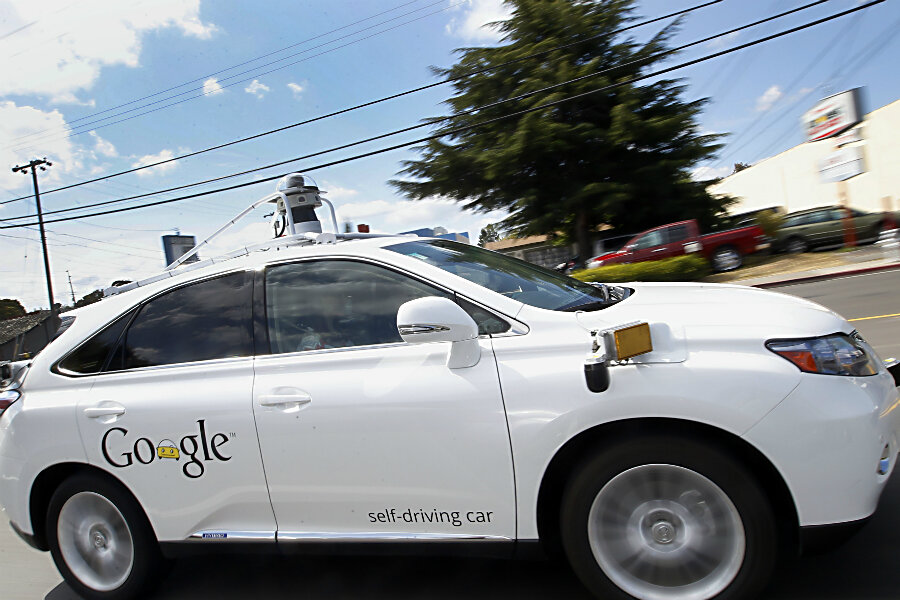Google self-driving car involved in accident, but humans are to blame
Loading...
One of Google’s self-driving cars was involved in an accident in which three people in the vehicle reported minor injuries after a car rear-ended it at a traffic light in Mountain View, California, The Associated Press reported.
“The three Google employees on board complained of minor whiplash, were checked out at a hospital and cleared to go back to work following the July 1 collision,” Google told the AP. “The driver of the other car also complained of neck and back pain.”
According to Google, it was the 14th accident in six years during more than 1.8 million miles of testing. Chris Urmson, who leads the company's driverless car project, said that other drivers, and not Google's cars, were to blame in all of the accidents.
“Our self-driving cars are being hit surprisingly often by other drivers who are distracted and not paying attention to the road,’ Mr. Urmson wrote in a blog post.
Cars without drivers on public streets have raised fears that the technology could make critical errors, resulting in road injuries or deaths. However, Urmson said data shows that Google's cars were much safer than human drivers.
"We're seeing first-hand the true measure of how distraction is impacting driving," Urmson told USA Today. "None of our accidents rise to the level of police reports. So what we are experiencing is what the road is really like."
As of June, Google had 23 of its Lexus RX 450h self-driving cars on public streets, mainly in Mountain View, California. “We’re continuing to test with our Lexus vehicles and we’ll gradually introduce more prototypes to the streets over the coming months,” Google said in its June report.
Earlier this year, The Christian Science Monitor reported that self-driving car accidents could delay autonomous technology by potentially slowing the testing process.
“Teaching self-driving cars to avoid serious accidents, which have the potential to reverse public opinion and stall innovation, is a priority for many companies developing autonomous vehicles,” the Monitor cited Raj Rajkumar, a pioneer of the technology with Carnegie Mellon University.
However, as Google continues to release information on any accidents in which its driverless cars are involved, Urmson says the cars which use a number of sensors to interpret the environment around it are less likely to cause accidents.
“Our self-driving cars can pay attention to hundreds of objects at once, 360 degrees in all directions, and they never get tired, irritable or distracted. People, on the other hand, “drive as if the world is a television show viewed on TiVo that can be paused in real time – one can duck out for a moment, grab a beer from the fridge, and come back to right where they left off without missing a beat” – to quote Sheila Klauer of the Virginia Tech Transportation Institute in Traffic: Why We Drive the Way We Do. That’s certainly consistent with what we’re seeing.”







